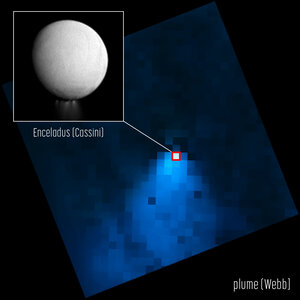Accept all cookies Accept only essential cookies See our Cookie Notice

About ESA
The European Space Agency (ESA) is Europe’s gateway to space. Its mission is to shape the development of Europe’s space capability and ensure that investment in space continues to deliver benefits to the citizens of Europe and the world.
Highlights
ESA - United space in Europe
This is ESA ESA facts Member States & Cooperating States Funding Director General Top management For Member State Delegations European vision European Space Policy ESA & EU Space Councils Responsibility & Sustainability Annual Report Calendar of meetings Corporate newsEstablishments & sites
ESA Headquarters ESA ESTEC ESA ESOC ESA ESRIN ESA EAC ESA ESAC Europe's Spaceport ESA ESEC ESA ECSAT Brussels Office Washington OfficeWorking with ESA
Business with ESA ESA Commercialisation Gateway Law at ESA Careers Cyber resilience at ESA IT at ESA Newsroom Partnerships Merchandising Licence Education Open Space Innovation Platform Integrity and Reporting Administrative Tribunal Health and SafetyMore about ESA
History ESA Historical Archives Exhibitions Publications Art & Culture ESA Merchandise Kids Diversity ESA Brand Centre ESA ChampionsSpace in Member States
Find out more about space activities in our 23 Member States, and understand how ESA works together with their national agencies, institutions and organisations.
Science & Exploration
Exploring our Solar System and unlocking the secrets of the Universe
Go to topicAstronauts
Missions
Juice Euclid Webb Solar Orbiter BepiColombo Gaia ExoMars Cheops Exoplanet missions More missionsActivities
International Space Station Orion service module Gateway Concordia Caves & Pangaea BenefitsLatest
Space Safety
Protecting life and infrastructure on Earth and in orbit
Go to topicAsteroids
Asteroids and Planetary Defence Asteroid danger explained Flyeye telescope: asteroid detection Hera mission: asteroid deflection Near-Earth Object Coordination CentreSpace junk
About space debris Space debris by the numbers Space Environment Report In space refuelling, refurbishing and removingSafety from space
Clean Space ecodesign Zero Debris Technologies Space for Earth Supporting Sustainable DevelopmentApplications
Using space to benefit citizens and meet future challenges on Earth
Go to topicObserving the Earth
Observing the Earth Future EO Copernicus Meteorology Space for our climate Satellite missionsCommercialisation
ESA Commercialisation Gateway Open Space Innovation Platform Business Incubation ESA Space SolutionsLatest
Enabling & Support
Making space accessible and developing the technologies for the future
Go to topicBuilding missions
Space Engineering and Technology Test centre Laboratories Concurrent Design Facility Preparing for the future Shaping the Future Discovery and Preparation Advanced Concepts TeamSpace transportation
Space Transportation Ariane Vega Space Rider Future space transportation Boost! Europe's Spaceport Launches from Europe's Spaceport from 2012Latest

Enceladus (NIRCam and NIRSpec IFU)
Thank you for liking
You have already liked this page, you can only like it once!
NASA/ESA/CSA's James Webb Space Telescope’s exquisite sensitivity and highly specialised instruments are revealing details into how one of Saturn’s moon’s feeds the water supply for the entire system of the ringed planet. Enceladus, a prime candidate in the search for life elsewhere in our Solar System, is a small moon about four percent the size of Earth. New images from Webb’s NIRCam (Near-Infrared Camera) have revealed a water vapour plume jetting from the south pole of Enceladus, extending out 40 times the size of the moon itself. The Integral Field Unit (IFU) aboard the NIRSpec (Near-Infrared Spectrograph) instrument also provided insights into how the water from Enceladus feeds the rest of its surrounding environment.
Enceladus orbits around Saturn in just 33 hours, and as it does it sprays water and leaves behind a torus — or ‘doughnut’ — of material in its wake. This torus is depicted in the top diagram in light blue.
Webb’s IFU is a combination of camera and spectrograph. During an IFU observation, the instrument captures an image of the field of view along with individual spectra of each pixel in the field of view. IFU observations allow astronomers to investigate how properties — composition in this case — vary from place to place over a region of space.
The unique sensitivity of Webb’s IFU allowed researchers to detect many spectral features characteristic of water originating from the embedding torus around Enceladus and the plume itself. This simultaneous collection of spectra from the plume and the torus has allowed researchers to better understand their strong relationship. In this spectrum, the white lines are the data from Webb, and the best-fit models for water emission are overlaid in different colours –purple for the plume, green for the area central to the moon itself, and red for the surrounding torus.
Webb’s NIRCam was built by a team at the University of Arizona and Lockheed Martin’s Advanced Technology Center.
NIRSpec was built for the European Space Agency (ESA) by a consortium of European companies led by Airbus Defence and Space (ADS) with NASA’s Goddard Space Flight Center providing its detector and micro-shutter subsystems.
[Image description: The infographic shows a diagram of Saturn, Enceladus, and its torus at the top, the NIRCam image of Enceladus at the bottom left, and the spectra from the NIRCam instrument at the bottom right.]
-
CREDIT
NASA, ESA, CSA, STScI, L. Hustak (STScI), G. Villanueva (NASA’s Goddard Space Flight Center) -
LICENCE
CC BY 4.0 INT or ESA Standard Licence
(content can be used under either licence)

Enceladus (NIRCam Image)

Jupiter, Europa, Thebe, and Metis (NIRCam) commissio…

Jupiter and Europa (NIRCam) commissioning image

Saturn’s rings shine in Webb’s observations of ringe…















 Germany
Germany
 Austria
Austria
 Belgium
Belgium
 Denmark
Denmark
 Spain
Spain
 Estonia
Estonia
 Finland
Finland
 France
France
 Greece
Greece
 Hungary
Hungary
 Ireland
Ireland
 Italy
Italy
 Luxembourg
Luxembourg
 Norway
Norway
 The Netherlands
The Netherlands
 Poland
Poland
 Portugal
Portugal
 Czechia
Czechia
 Romania
Romania
 United Kingdom
United Kingdom
 Slovenia
Slovenia
 Sweden
Sweden
 Switzerland
Switzerland
























